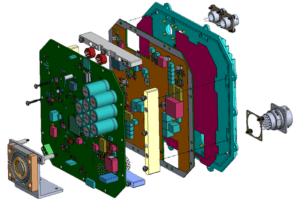DDR5
DDR5 is the fifth generation of DDR SDRAM and was introduced to provide further improvements over DDR4 in various aspects. DDR5 is not backwards compatible with DDR4.
-
Higher Speeds and Bandwidth: DDR5 has significantly higher data transfer rates compared to DDR4. While DDR4 starts at 2133 MHz, DDR5 begins at 4800 MHz and is expected to reach speeds beyond 8400 MHz. This increase in speed results in greater overall bandwidth and efficiency, which is particularly beneficial for data-intensive applications and high-performance computing.
-
Increased Capacity: DDR5 supports larger capacity memory modules. This means that individual DDR5 DIMMs can have higher capacity than DDR4, which is especially advantageous for servers and systems requiring large amounts of RAM.
-
Improved Power Efficiency: DDR5 operates at a similar voltage level to DDR4 (around 1.1V) but includes enhanced power management features. It introduces a more refined approach to voltage regulation, moving from the motherboard to the memory module itself, which allows for more precise and efficient power management.
-
Enhanced Data Integrity and Reliability: Like DDR4, DDR5 continues to include features for error correction and data integrity, but with further enhancements. This makes DDR5 more reliable and stable, which is crucial for critical systems and enterprise applications.
-
Channel Architecture Improvements: DDR5 introduces changes in memory channel architecture. It splits the memory channels into two independent sub-channels, allowing for improved efficiency and parallelism in memory operations, which can lead to performance improvements in various applications.
-
Physical Differences: DDR5 is not backward compatible with DDR4 due to differences in the physical design, pin layout, and electrical requirements. DDR5 DIMMs have a different pin configuration which makes them incompatible with DDR4 slots.



